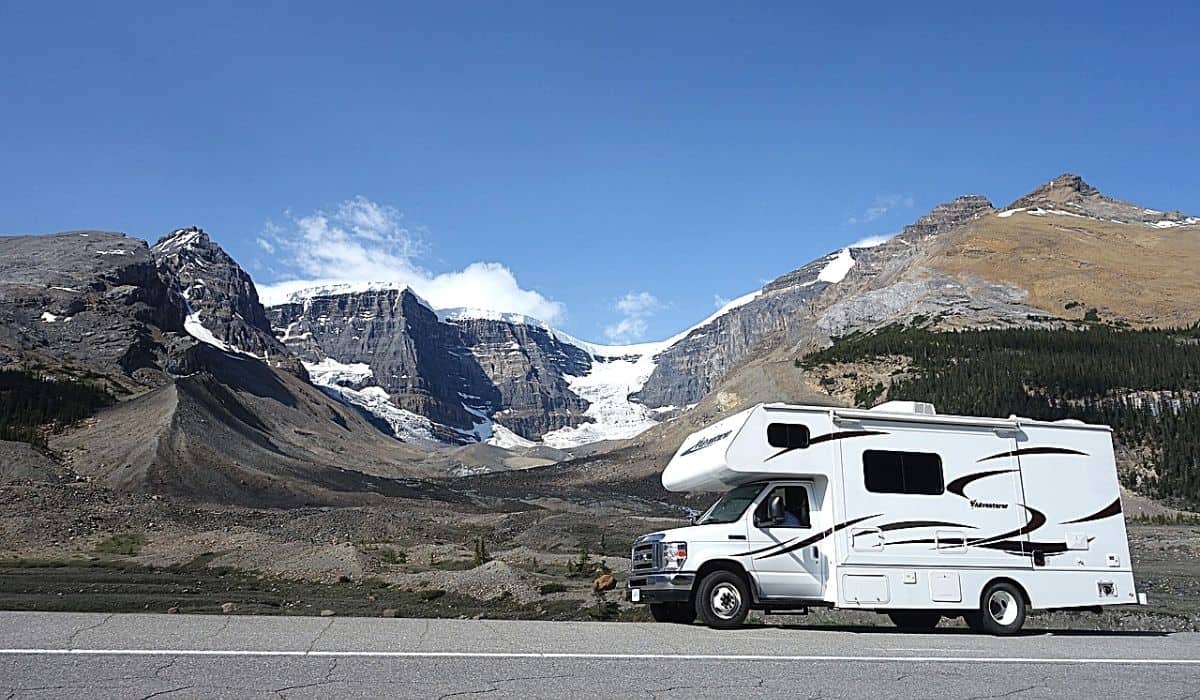If you’re new to RVing and thinking about buying a motorhome, it can be hard to know which type of RV is right for you and your family.
As it seems like there is an endless amount of choices and options when it comes to RVs and motorhomes.
But one of the most important choices you need to make when choosing an RV is which class of motorhome to go with.
As each class of motorhome, including Class A, B, and C RVs offer their own unique set of pros and cons.
However, in my opinion, the Class C RV is one of the best types of motorhomes you can buy, due to its numerous advantages, which we will take a look at below.
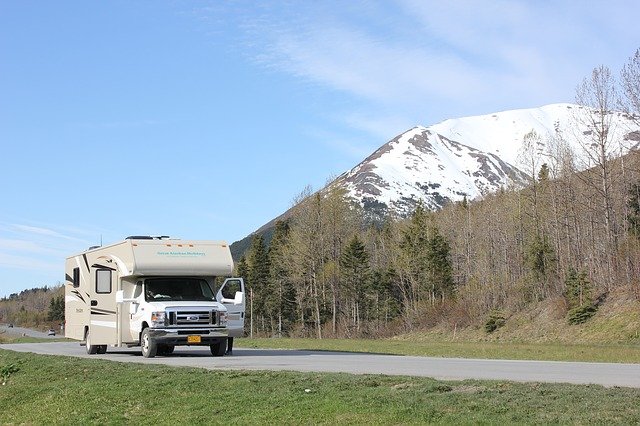
1. More Affordable than Any Other Type of Motorhome
One of the biggest reasons to buy a Class C motorhome over a Class A or Class B motorhome is how affordable and economical the Class C RV is.
As the Class C motorhome is the cheapest type of motorhome you can buy.
Making it a great choice for RVers looking for an affordable option or shopping on a budget.
| Motorhome Class | Average New Price | Average Used Price |
| Class A Motorhome | $90,000 – $200,000 | $35,000 – $170,000 |
| Class B Motorhome | $80,000 – $165,000 | $50,000 – $140,000 |
| Class C Motorhome | $75,000 – $120,000 | $25,000 – $100,000 |
*Used Motorhome Pricing 10 Years Old or Newer
To see the cheapest Class C motorhomes, check out our article “The 10 Cheapest Class C RVs You Can Buy“.
2. Easier to Drive (Lighter and Shorter)
While the Class B RV has the distinction of being the easiest RV to drive, the Class C RV comes in a close second.
As the Class C motorhome like the Class B tends to be lighter and shorter compared to the larger Class A motorhome and has a much tighter turning radius.
Making it much easier to park as well as manage while going down the road.
In addition, the Class C motorhome, which is typically built on either the Ford or Chevy truck chassis has a very solid and stable feel while driving, and has minimal body roll compared to the taller and heavier Class A motorhome.
3. Large Towing Capacity
Another big advantage of Class C motorhomes is their large towing capacity, as most Class C RVs either have a 5,000-pound towing capacity when built on the Chevy chassis or a 7,500-pound towing capacity when built on the Ford chassis.
Giving you the ability to easily tow a wide variety of vehicles behind your Class C motorhome including a mid-size SUV, motorcycles, a cargo trailer, or even a small horse trailer.
This is because standard Class C motorhomes are usually equipped with either a large V8 or V10 engine, which provides plenty of power for towing.
In addition, Class C RVs also have a robust transmission, drivetrain, chassis, and suspension, that give the Class C motorhome a GCWR or gross combined weight rating of often over 20,000 pounds.
GCWR: Gross Combined Weight Rating – Max allowable weight for both the RV and the vehicle being towed.
Which leaves plenty of towing capacity leftover when you factor in the typical fully-loaded weight of a Class C RV.
4. Small Enough You Don’t Need a Tow Vehicle
While some of the bigger Class C motorhomes can be well over 30 feet in length, there are many Class C RVs that are actually closer to 25 feet in length.
Allowing you to not only use your Class C for transportation to your intended destination but also for driving around the area, when you get to where you’re going.
Which is great because you don’t have to worry about messing with a tow vehicle while traveling.
In addition, the lack of a tow vehicle also helps to improve your overall gas mileage.
As you won’t have the added weight of a tow vehicle when traveling with your Class C motorhome.
For this to work best though you really need a Class C under 30 feet in length and ideally under 26 feet in length, otherwise, it can get quite cumbersome when driving around town and trying to park.
5. Better Gas Mileage Compared to a Class A
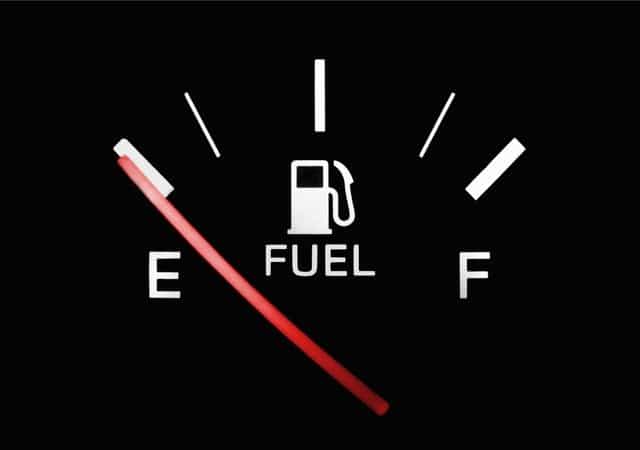
While Class C motorhomes aren’t going to win any awards for gas mileage, as they usually average between 10 and 13 miles per gallon.
This is still better than the gas mileage you can expect to get with a Class A motorhome, which is often in the single digits and averages between 7 and 9 miles per gallon.
And while you might not think this is that significant of a difference, when you’re talking about a 1,000 mile trip with your motorhome, this can add up to significant cost savings.
For example, just look at how much money you could save if you averaged just 3 miles per gallon better in a Class C motorhome versus a Class A on a 1,000-mile road trip.
Class C Motorhome – 1,000 Miles / 12 MPG = 83 Gallons of Gas
Class A Motorhome – 1,000 Miles / 9 MPG = 111 Gallons of Gas
This means that you would need to buy 28 more gallons of gas for the same trip in a Class A motorhome compared to a Class C.
And if you assume a gallon of gas costs you $3.00 per gallon on average, you could save $84 in just one trip driving a Class C motorhome.
6. Easier to Service and Maintain
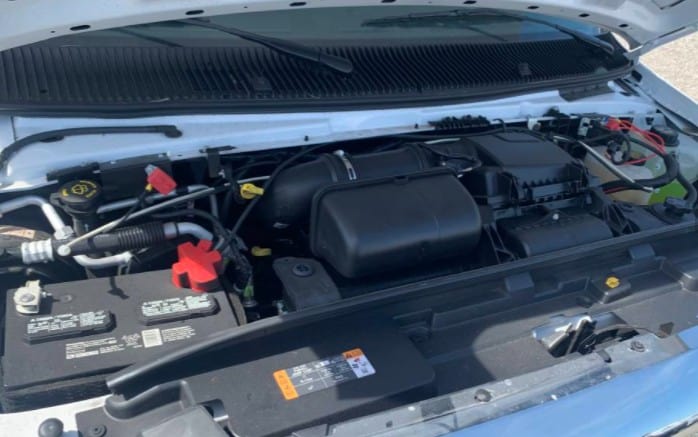
Another benefit of the Class C motorhome is that they are typically much easier to service and maintain compared to other types of motorhomes, as they are built on very common truck chassis with mass-produced engines, transmission, and drivetrains.
So even if something does happen do go wrong with your Class C RV while on the road.
You’ll always be able to find plenty of mechanics nearby no matter where you are in the country that can work on your RV and get you back on the road for a reasonable price.
In addition, because the Class C motorhome is just like a Ford or Chevy truck in regards to its engine placement, they tend to be much easier to work on as the engine is much more accessible when compared to a Class A motorhome.
7. Lower Maintenance Costs
Because Class C RVs tend to be built using mass-produced Ford or Chevy chassis, engines, and parts, they tend to be much cheaper to work on and maintain.
As there are a wide variety of mechanics and shops that can work on them allowing you to shop around for the best deal on labor.
In addition, because the parts needed for repair and maintenance are mass-produced they are also cheaper to buy than if they were not.
8. Larger RV Tanks Compared to a Class B
While Class A and Class C motorhomes tend to have similar-sized fresh, gray, and blackwater tanks, Class C RVs have much larger RV tanks compared to the smaller and more compact Class B RV.
Giving the Class C RV the ability to camp off-grid for longer compared to the Class B RV, making it the superior choice for off-grid and dry camping.
| RV Model | RV Class | Fresh/Gray/Black Tank Size |
| Thor Motor Coach Sequence 20A | Class B | 27/13/13 |
| Winnebago Travato 59G | Class B | 18/14/11 |
| Winnebago Solis 59P | Class B | 21/20/NA |
| Thor Four Winds 22E | Class C | 50/37/24 |
| Winnebago Minnie Winnie 31K | Class C | 44/30/30 |
| Coachmen Freelander 30BH | Class C | 50/34/29 |
9. Better Equipped for Boondocking
The Class C motorhome is one of the best types of motorhomes for boondocking as well.
As the Class C RV has the ability to camp off-grid for longer periods of time when compared to the Class B RV due to its larger holding tanks and storage capacity.
Allowing you to store larger amounts of water and supplies, which extends the amount of time you can boondock for.
In addition, because the Class C motorhome is built on a robust truck chassis, it allows you to go farther off the beaten path than you could with a Class A.
Giving you the ability to camp in much more remote and secluded spots, which is really what boondocking is all about.
10. Safer in Front Impact Collisions Compared to a Class A
Class C motorhomes are far safer in a front impact collision compared to Class A motorhomes, due to the large hood and front engine bay, which provides a protective barrier between the impact point and the front passengers.
As the front engine bay on a Class C motorhome helps to absorb the impact from a front impact collision reducing the forces of the crash felt by the driver and passenger.
In addition, the Class C motorhome has a protective front cab area designed to act as a protective crash box in the event of a major accident.
While the Class A motorhome has no such protective cab, making the driver and passenger far more susceptible to injury in a front impact collision.
11. Better Overall Crash Safety
While you might think that the Class A motorhome is the safest overall motorhome on the road today, due to its larger size and heavier weight.
In reality, the Class A motorhome is actually the least safe motorhome you can buy.
The reason for this is due to how the Class A RV is constructed, as Class A motorhomes are built using largely stick frame construction with wood studs and thin layers of insulation, plywood, and fiberglass.
Which do not hold up well to the extreme forces experienced in a crash.
And while it’s true that the Class C RV living area is constructed largely in the same way as the Class A RV.
The big advantage that the Class C motorhome has over the Class A motorhome is the front cab area, which provides superior protection in a crash and greatly increases the overall crash safety of the Class C motorhome compared to the Class A motorhome.
For more information on RV crash safety including RV crash tests, make sure you check out our article “How Safe Are RVs: Things You Need to Know“.
12. Larger Sleeping Capacities
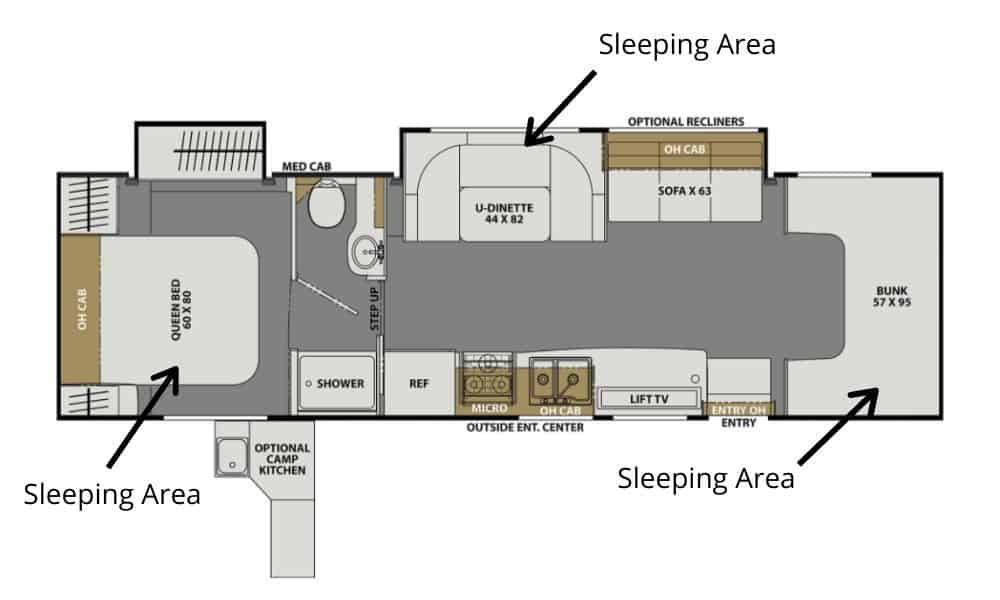
Another advantage of the Class C motorhome over other types of motorhomes is the large sleeping capacity that they offer, as it’s not uncommon for Class C RVs to offer a 6 person sleeping capacity.
The reason for this is that almost every Class C motorhome regardless of size offers three main sleeping areas including a large queen or king bed in the rear, a convertible dinette booth in the main living area, and a large overhead bunk above the front cab area.
Making Class C RVs great for families or anyone that needs a large sleeping capacity.
13. Provides a Large Amount of Interior and Exterior Storage Space
While the Class A RV, in general, does offer more storage space compared to a Class C RV due to its full basement storage, the Class C motorhome comes in a close second to the Class A motorhome.
And offers triple the amount of storage space compared to the much smaller and more compact Class B RV.
Due to the ample cabinetry throughout the interior of the typical Class C motorhome and multiple storage lockers on the exterior.
14. Shorter Length Fits in More Campsites
The honor of the shortest motorhome goes to the Class B RV, which typically has an overall length of just 17 to 21 feet.
However, shorter Class C motorhomes can often rival the length of a Class B motorhome with lengths as short as 23 and 24 feet.
Making them not much bigger than a Class B RV, length-wise, but offering a lot more interior space as well as comfort and amenities.
Which in my opinion makes the Class C motorhome superior to the smaller and more compact Class B motorhome.
But even the largest Class C motorhomes are usually only around 36 feet or so, allowing them to fit in most campsites, including most national and state park campgrounds, which typically have a cut-off length of around 35 feet depending on the park.
15. Offers More Family-Friendly Floorplans
While Class B RVs and campervans are some of the most sought-after RVs on the road today, thanks to their small compact size and better fuel efficiency, one of their biggest drawbacks is their lack of family-friendliness.
As most Class B motorhomes only have a 2 person sleeping capacity and offer very limited interior space, making them a poor choice for families.
There are, however, some Class B RVs that can actually sleep 4 people at a time which we highlight in our article “10 Amazing Class B RVs that Actually Sleep 4“.
By contrast, however, the Class C motorhome offers the size and family-friendly floorplans that families need, as most Class C RV floorplans offer large sleeping capacities, lots of interior space, larger kitchens and bathrooms, and plenty of room for everyone to hang out comfortably.
16. More Spacious and Better Master Bedrooms
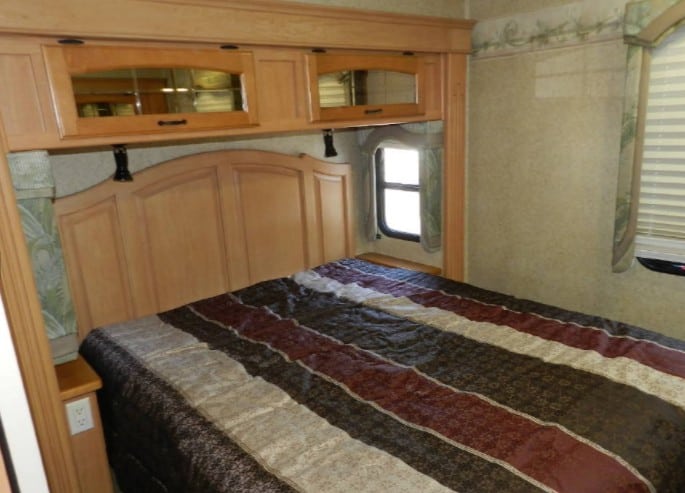
While Class C motorhomes and Class A motorhomes tend to offer similar-sized master bedrooms.
If you’re trying to decide between a Class C motorhome and a Class B motorhome, there is really no comparison when comparing the main sleeping area of each of these coaches.
As the Class C RV has a much more spacious and feature-rich master bedroom compared to a Class B RV thanks to its larger and wider size.
17. Sits Lower to the Ground
While the Class A motorhome has more exterior storage space compared to a Class C, due to its full basement underneath the motorhome.
One downside to all this extra storage space underneath is that the Class A motorhome tends to sit up much higher and be more top-heavy compared to the Class C motorhome.
And because the Class C motorhome sits lower to the ground and is less top-heavy, the RV tends to handle and corner better while driving and is less prone to body roll while turning.
18. Multiple Entrance and Exit Points
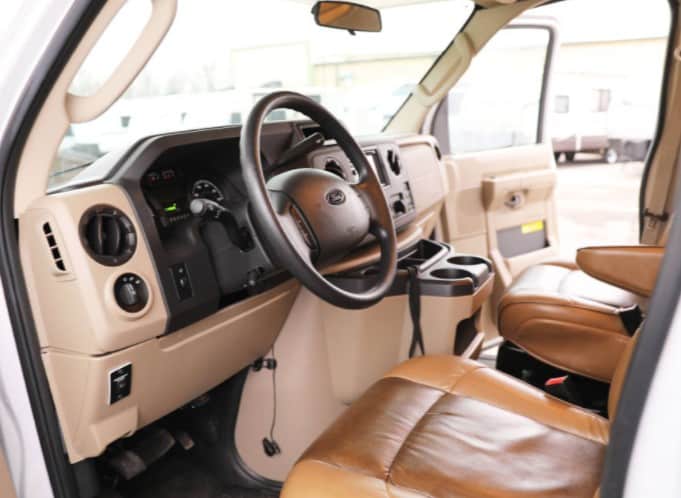
The standard Class C motorhome has three separate entrance and exit points throughout the coach including the front driver and passenger doors as well as an additional third door located in the main living area of the motorhome on the passenger side.
Making the Class C RV not only much safer in case of emergency as there are multiple exit points but also more convenient.
Because no matter where you happen to be on the outside of the RV there will always be a door close by for entrance.
The multiple entrances also make it much easier and more convenient when making quick fuel and food stops while traveling as well.
As you can exit the vehicle from where you’re seated in the front cab area, as opposed to Class A motorhomes that typically only have one door in the main living area and requires you to walk through the motorhome to exit.
19. Lighter Weight
The lightest motorhome you can buy is the Class B motorhome, which typically has a weight that ranges from 6,000 to 8,000 pounds.
While the Class C motorhome is the second lightest motorhome you can buy with a weight that typically ranges from 10,000 to 12,000 pounds.
Which might seem like a lot when comparing the weight of a Class C motorhome to the weight of a Class B motorhome.
However, when you take into account that most Class A motorhomes will usually weigh at least 15,000 pounds and can weigh as much as 30,000 pounds, it really puts into perspective how lightweight a Class C motorhome is.
And the lighter the motorhome is the better fuel efficiency and handling the RV will offer.
20. Easier to Heat and Cool the Front Cab Area
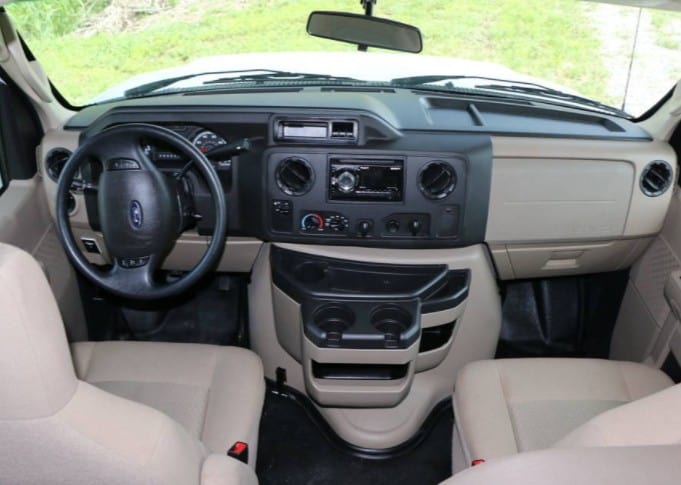
Thanks to the mostly enclosed front cab area of a Class C motorhome, it’s much easier to heat and cool the space, while traveling providing a much more comfortable driving experience.
Compared to a Class A motorhome, which features a large open driving area that’s part of the main living area of the motorhome, which makes it much more difficult to regulate the temperature while driving to stay comfortable.
21. Easier to See What’s in Front of You
While the huge front windshield of a Class A motorhome can offer some amazing views of the countryside while traveling.
That large windshield ironically does little to help you see what’s directly in front of you, making the Class A RV harder to drive when compared to the Class C RV.
This is because the Class A RV has inherent design features that greatly inhibit your ability to see what’s directly in front of the motorhome, including how far the driver sits away from the windshield, the higher driving position, and flat blunt front end.
22. Driver and Passenger Airbags
While you might assume that all motorhomes have driver and passenger-side airbags in actually only Class C and Class B motorhomes have airbags.
Because shockingly Class A motorhomes are not equipped with driver or passenger airbags.
Which is another feature that makes Class C motorhomes safer to drive compared to Class A motorhomes.
If you’re looking for a more in-depth analysis on the differences between the Class C RV and the Class B RV, make sure you check out our article “Class B RV vs Class C RV: Which is Better?“.
Recent Posts
47 RV Storage Ideas to Maximize Your Space for Compact Living
Camping and living in an RV is an incredible adventure, but it comes with its fair share of challenges, particularly around storage, due to the lack of space. Because of this, it's a must to make...
Are you looking to give your RV a cozy, rustic makeover? If so, farmhouse decor is the perfect style to transform your camper into a warm and inviting home on wheels. In this blog post, I'll...

